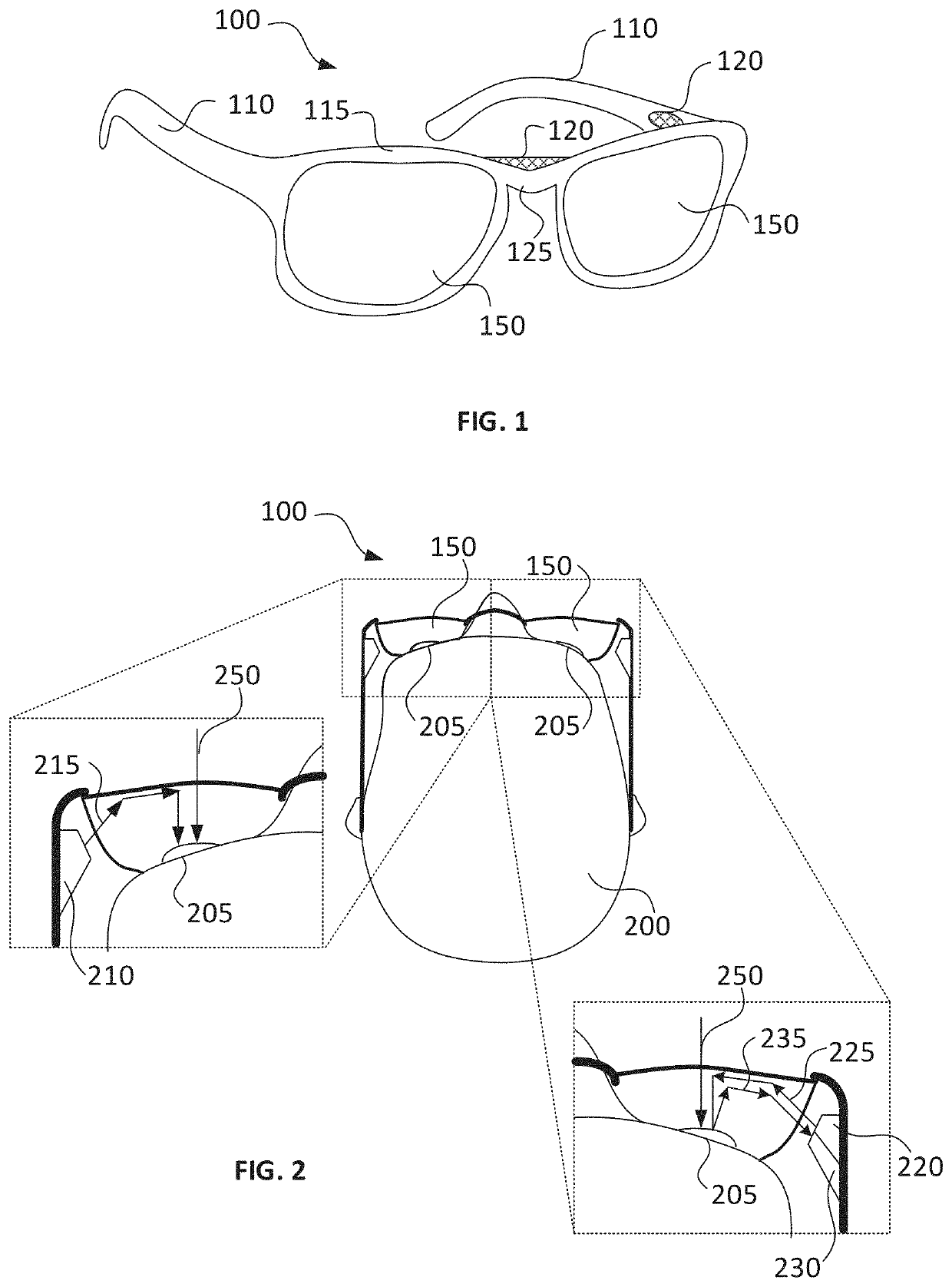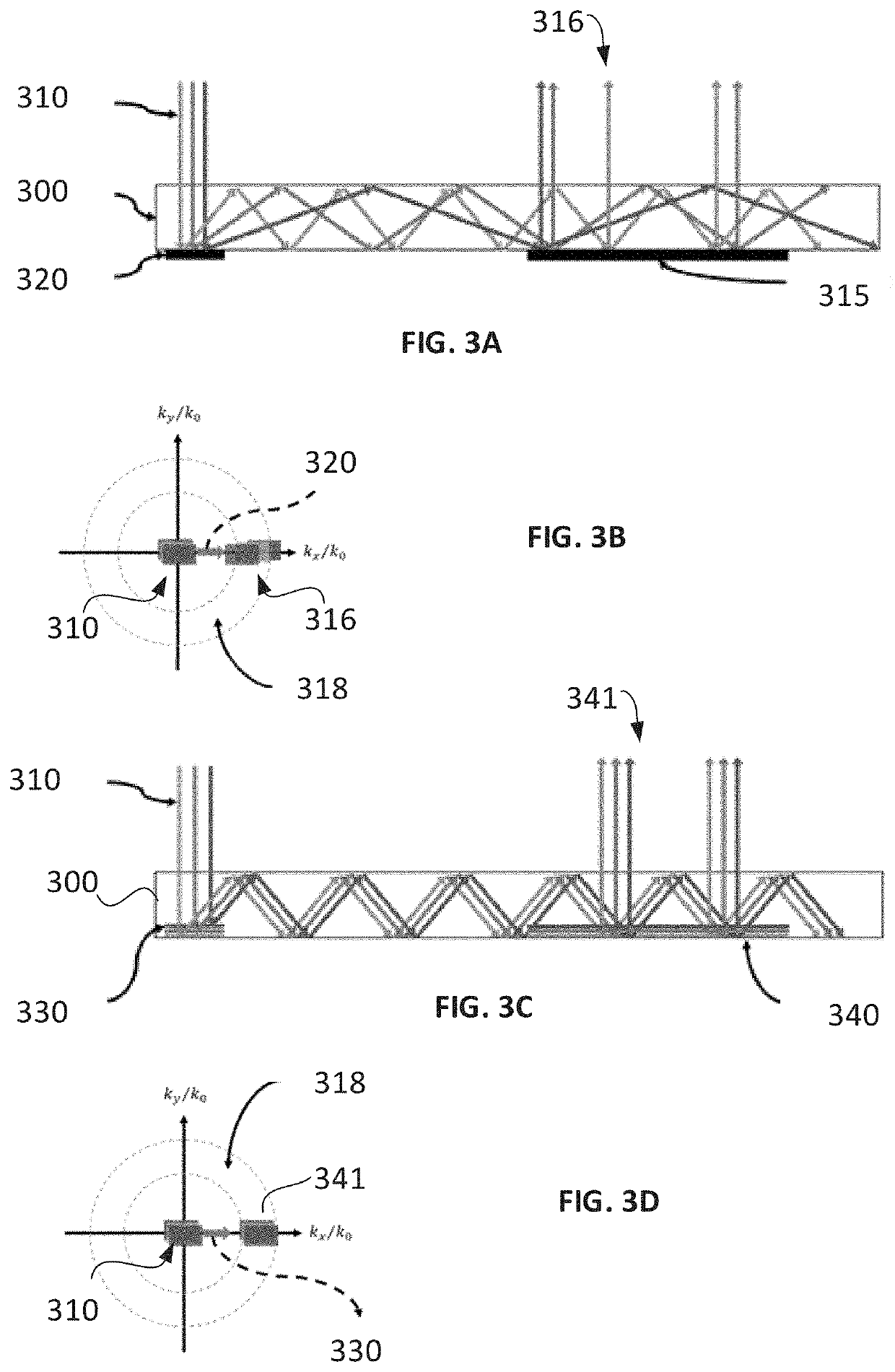See-through display for an augmented reality system
- Summary
- Abstract
- Description
- Claims
- Application Information
AI Technical Summary
Benefits of technology
Problems solved by technology
Method used
Image
Examples
example 1
[0097]FIGS. 9A and 9B show an example single silver disc simulation scheme and transmission of the example single silver disc for several disc radii respectively, both in accordance with some example embodiments. FIGS. 9C and 9D show an example three layer of metallic discs simulation scheme and transmission of Al, Ag and Au disc stack design for 450 nm, 550 nm and 650 nm respectively, both in accordance with some example embodiments. A commercially available optical simulations software (Lumerical FDTD available by Lumerical in Canada) was applied to simulate the spectral properties of the different layers composing the MS. FIG. 9A shows an FDTD simulation scheme of a single nano size silver particle. In FIG. 9B, the transmission spectra of this particle is shown for several radii. It was found that the resonance's center wavelength was red-shifted as the particle radius is increased. In some example embodiments, such a dependence may be utilized to design a stack of three differen...
example 2
[0098]FIG. 10A shows a scanning electron microscope image of a sample gold MS. FIG. 10B shows a zoomed-in section of the sample. A periodic nature of the sample, composed of arrays of gold nanodiscs is clearly visible. It is seen that the nanodiscs are relatively uniform. The measured diameter was 140 nm±4 nm, with inter-particle spacing of 180 nm±8 nm. Improved performance may be achieved by altering particle size and inter-particle spacing. Optionally, a duty cycle of a periodic function of the sample may also be altered to widen the nanodiscs zone's width.
example 3
[0099]FIG. 11A shows a scanning electron microscope image of an aluminum MS. The MS is a single MS binary plasmonic MS, designed to manipulate red light. The nano-structures sizes are 130±5 nm with an inter-particle spacing of 200 nm. FIG. 11B shows a zoomed-in section of the MS. The MS was fabricated using e-beam lithography (Raith e-Line). An indium-tin-oxide covered glass was used as the substrate. After the e-beam process, 40 nm thick Aluminum film was then deposited by e-beam evaporation and subsequently lifted off.
PUM
 Login to view more
Login to view more Abstract
Description
Claims
Application Information
 Login to view more
Login to view more - R&D Engineer
- R&D Manager
- IP Professional
- Industry Leading Data Capabilities
- Powerful AI technology
- Patent DNA Extraction
Browse by: Latest US Patents, China's latest patents, Technical Efficacy Thesaurus, Application Domain, Technology Topic.
© 2024 PatSnap. All rights reserved.Legal|Privacy policy|Modern Slavery Act Transparency Statement|Sitemap



